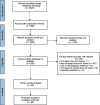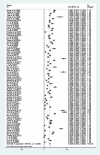Prevalence and risk factors associated with birth asphyxia among neonates delivered in China: a systematic review and meta-analysis
- PMID: 39732647
- PMCID: PMC11681728
- DOI: 10.1186/s12887-024-05316-7
Prevalence and risk factors associated with birth asphyxia among neonates delivered in China: a systematic review and meta-analysis
Abstract
Background: Birth asphyxia is a critical condition caused by an insufficient oxygen supply during delivery, and it poses a major threat to the health of newborns. The present meta-analysis aimed to estimate the prevalence of birth asphyxia among neonates and identify its risk factors in China.
Methods: PubMed, EMBASE, Scopus, Web of Science, the China Academic Journals (CNKI), the Chinese Biomedical Literature (CBM), the China Science and Technology Journal Database (VIP), and the WanFang database were searched for related publications. Two researchers independently selected the literature, extracted the relevant data, and assessed its methodological quality. The meta-analysis applied a random-effects model with Stata 17.0 software to calculate the pooled prevalence of birth asphyxia among neonates delivered in China and to merge the odds ratios (ORs) of risk factors. Subgroup analysis was performed on the included studies. Publication bias was assessed by funnel plots and Egger's test.
Results: Eighty studies were eligible for inclusion. The overall prevalence of birth asphyxia in newborns was 4.8% (95% CI, 4.5%-5.2%). In the subgroup analyses, the northern area presented the highest prevalence (5.1%; 95% CI, 4.1%-6.3%), followed by the southern area (4.1%; 95% CI, 3.3%-5.1%). The rural setting presented the highest prevalence (6%; 95% CI, 4.6%-7.4%), followed by the urban (4.2%; 95% CI, 4.6%-7.4%) and mixed (5.8%; 95% CI, 5.3%-6.3%) settings. The Apgar score demonstrated the highest prevalence (4.6%; 95% CI, 3.8%-5.4%), followed by the Apgar score with the umbilical artery blood pH (3.7%; 95% CI, 2.2%-5.7%). A significant difference in prevalence was found between studies with sample sizes greater than 5,000 (2.2%; 95% CI, 1.6%-3%) and those with 5,000 or fewer participants (6.2%; 95% CI, 5.5%-7.1%). Furthermore, there was a significant decrease in the incidence of birth asphyxia from 1995-2016 (4.9%; 95% CI, 4.2%-5.9%) to 2017-2023 (3.7%; 95% CI, 2.6%-5%). Placental abruption (OR = 5; 95% CI, 3.08-8.13), placenta previa (OR = 2.57; 95% CI, 1.84-3.58), advanced maternal age (OR = 3.94; 95% CI, 1.46-10.62), primigravida (OR = 5.33; 95% CI, 0.41-68.71), premature birth (OR = 3.36; 95% CI, 2.61-4.32), intrauterine distress (OR = 4.48; 95% CI, 3.47-5.80), stained amniotic fluid (OR = 3.28; 95% CI, 2.25-4.79), macrosomia (OR = 6.30; 95% CI, 0.61-65.22), foetal malformation (OR = 7.44; 95% CI, 1.46-38.02), breech birth (OR = 2.42; 95% CI, 1.24-4.73), caesarean section (OR = 1.72; 95% CI, 0.91-3.24), assisted delivery (OR = 13.62; 95% CI, 5.50-33.73), prolonged second stage of labour (OR = 1.43; 95% CI, 0.68-3.01), and malpresentation (OR = 4.20; 95% CI, 2.21-7.99) were major risk factors.
Conclusions: The prevalence of birth asphyxia among newborns in China is relatively high. In addition, 14 risk factors are related to neonatal birth asphyxia. Urgent attention needs to be focused on regionalized maternal and child management to address this problem in China.
Keywords: Birth asphyxia; Meta-analysis; Newborns; Prevalence; Risk factors; Systematic review.
© 2024. The Author(s).
Conflict of interest statement
Declarations. Ethics and consent to participate: Not applicable. Consent for publication: Not applicable. Competing interests: The authors declare no competing interests.
Figures
References
-
- Solevåg AL, Schmölzer GM, Cheung PY. Novel interventions to reduce oxidative-stress related brain injury in neonatal asphyxia. Free Radic Biol Med. 2019;142:113–22. - PubMed
-
- Neonatal Resuscitation Group. Perinatal Medicine Branch, Chinese Medical Association. Expert consensus on diagnosis of neonatal asphyxia. Chin J Perinat Med. 2016;1:3–6.
-
- Black RE, Cousens S, Johnson HL, Lawn JE, Rudan I, Bassani DG, et al. Global, regional, and national causes of child mortality in 2008: a systematic analysis. Lancet. 2010;375(9730):1969–87. - PubMed
-
- Wyllie J, Perlman JM, Kattwinkel J, Atkins DL, Chameides L, Goldsmith JP, et al. Part 11: Neonatal resuscitation: 2010 International Consensus on Cardiopulmonary Resuscitation and Emergency Cardiovascular Care Science with Treatment Recommendations. Resuscitation. 2010;81(Suppl 1):e260–87. - PubMed
-
- Thio M, van Kempen L, Rafferty AR, Bhatia R, Dawson JA, Davis PG. Neonatal resuscitation in resource-limited settings: titrating oxygen delivery without an oxygen blender. J Pediatr. 2014;165(2):256-60.e1. - PubMed
Publication types
MeSH terms
Grants and funding
- JCYJJCYJ20210324114213037/Shenzhen Science and Technology Innovation Commission Project
- JCYJJCYJ20210324114213037/Shenzhen Science and Technology Innovation Commission Project
- JCYJJCYJ20210324114213037/Shenzhen Science and Technology Innovation Commission Project
- JCYJJCYJ20240805154233001/Shenzhen Science and Technology Innovation Commission Project
LinkOut - more resources
Full Text Sources




